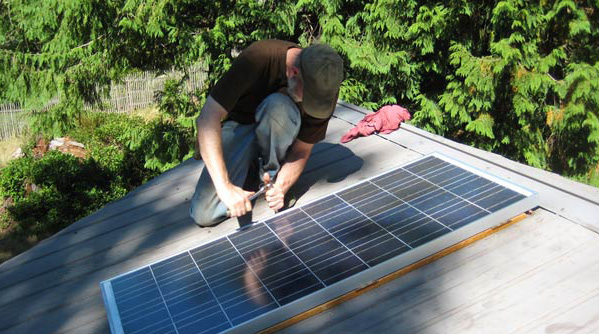ESSENTIAL KNOWLEDGE ABOUT SOLAR POWER
The Photovoltaic Effect

Solar cells turn sunlight into usable energy via the Photovoltaic Effect. Man made materials can capture up to 4% of the sun’s total energy. That may not seem like a lot at first, but keep in mind the sun has the power to blind you in ten minutes if you stare directly at it. There’s a lot of solar energy available to harness. A photovoltaic cell typically has four main layers. The top layer is glass or clear plastic. That’s basically just there to sandwich everything in place. Next come what’s called an N–Layer, a junction and a P–Layer.
“N” and “P” stand for Negative and Positive. The sun’s energy is composed of photons, which is where we get the first half of the word photovoltaic. The sunlight hitting the N–Layer causes the semiconductor to give off a negative charge on an atomic level while the P–Layer causes a positive charge.
Sandwiching the N and P Layers allows your solar cell to capture the most possible energy from the sun. The two layers are typically both made from silicon. One is treated to have the positive charge and the other is treated to have a negative charge.
Since most solar panels have about the same level of efficiency, size determines how much power you can generate. Some people put up a single panel to power a specific appliance. Other people cover the roof on the sunny side of their house with as many panels as possible in order to get off the grid.
In order to power the needs of a conservative house with a well insulated refrigerator, microwave oven, 30 inch LCD television, desktop computer with an 18 inch monitor (but no printer— they’re energy hogs), compact fluorescent lighting for four rooms, and a little bit of miscellaneous power usage, you’re probably going to need about a dozen panels which can generate 80–100 watts each plus an array of 20 batteries.

